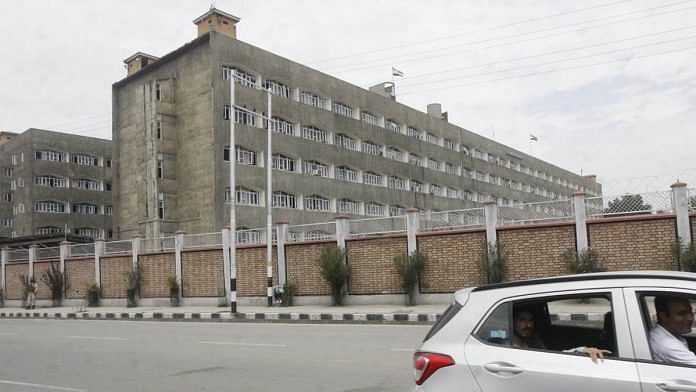New Delhi: The Ministry of Home Affairs (MHA) has included the Union territories of Jammu and Kashmir and Ladakh under the category of ‘Hard Areas’ for the joint AGMUT (Arunachal Pradesh-Goa-Mizoram and Union Territories) cadre for IAS and IPS officers.
The categorisation, which was brought in by an 18 January amendment to the earlier guidelines for the transfer/posting of IAS and IPS officers of the joint AGMUT cadre, clubs J&K and Ladakh with the strife-prone northeastern states of Arunachal Pradesh and Mizoram.
After the scrapping of Article 370 in 2019 and the reorganisation of the state of Jammu and Kashmir into two Union territories, the administration had been run by officers of the old J&K cadre, or officers on central deputation posted in the areas. The Lok Sabha had passed the Jammu and Kashmir Reorganisation (Amendment) Bill, 2021, which merged the J&K cadre of All India Service Officers comprising IAS, IPS, and IFS officers with that of the AGMUT cadre last year.
ThePrint reached the spokespersons for the home ministry and and Department of Personnel and Training through text messages, and this report will be updated when they respond.
‘Hard’ and ‘regular’ areas
Tuesday’s order, of which ThePrint has a copy, is a modification of an already existing system of categorisation under the AGMUT cadre.
Areas administered by officers of this cadre are divided into two categories — Category A or ‘Regular Areas’ (Delhi, Chandigarh, Goa, Puducherry, Dadra and Nagar Haveli, and Daman and Diu) and Category B or ‘Hard Areas’ (Arunachal Pradesh and Mizoram, and now J&K and Ladakh).
According to a senior government official, a Union territory or state is categorised as ‘hard’ or ‘regular’ based on the topography (that is, whether it has difficult or inaccessible terrain) and the degree of sensitivity, in terms of the presence of insurgency or whether the area is strife-prone.
Ensuring enough officers for J&K
J&K and Ladakh’s categorisation as ‘Hard Areas’ is expected to help boost the recruitment of IAS officers for these territories, said sources among those in the civil services, as officers deputed in these areas are eligible for certain incentives, as mentioned in the ‘guidelines for transfer/posting of IAS/IPS officers of joint AGMUT cadre’, dated November 2016.
The guidelines for officers posted in ‘Hard Areas’ mention special provisions of training abroad, elevation to the level of deputy secretary after completion of tenure in the area, and gradation incentives.
The number of IAS recruitments for J&K has been dropping since 2016, according to DoPT records. The number of officers recruited into the cadre went down from three to two that year.
Before that, the number of IAS recruitments in the J&K cadre generally remained between three to four officers every year, according to the records. But in both 2018 and 2019, the Centre recruited only one IAS officer each for the J&K cadre.
“We have been planning to do this for quite some time now. The idea is to provide the officers serving in the area with the special incentives of serving in the ‘Hard Areas’, category B. This move also ensures that the government will have an availability of a good number of IAS and IPS officers in the area,” a senior MHA official told ThePrint on the condition of anonymity.
(Edited by Poulomi Banerjee)
Also read: Editors Guild ‘aghast’ at ‘hostile takeover’ of Kashmir Press Club, seeks status quo



